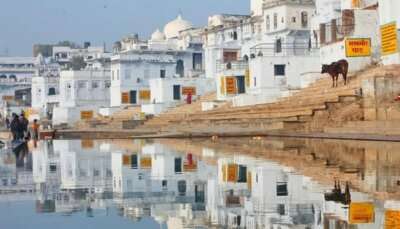Manimahesh Lake Trek Is A Sacred Pilgrimage In Himachal Pradesh
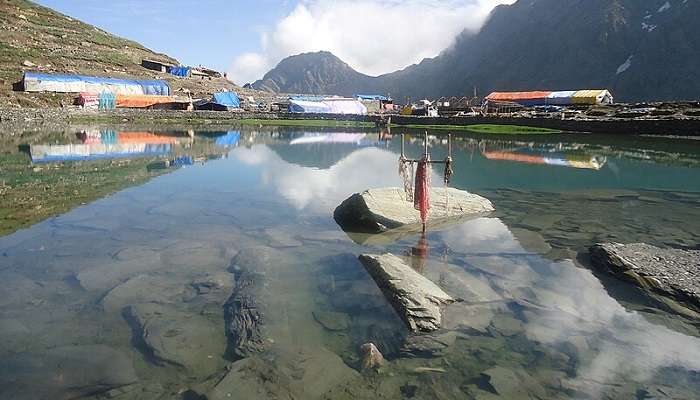
One of India’s state-told pilgrimage sites, Manimahesh Lake Trek or Manimahesh Yatra is guaranteed one of India’s best treks.This trek is just for those who enjoy being part of nature and taking in all it has to offer. Manimahesh Lake is situated on the foothills of the Manimahesh Kailash or Chamba Kailash. This trek boasts about its path with a vast expanse of snow-covered mountains. Pilgrims, nature lovers, and trekkers visit this holy place where Lord Shiva is believed to reside. The soul is blessed and purified during this expedition.
Significance Of The Manimahesh Lake Trek
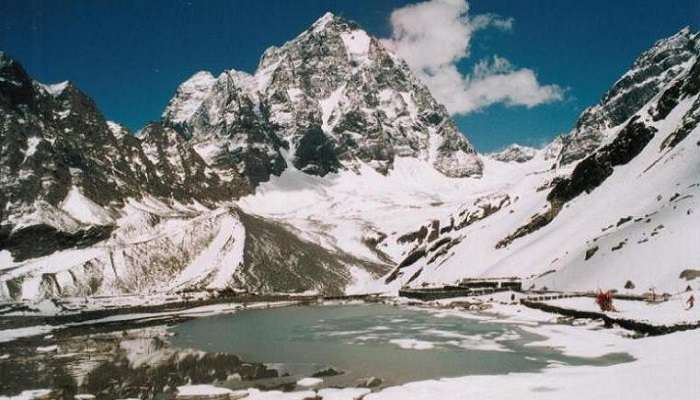
- The Manimahesh Lake Trek takes you to the Manimahesh Kailash in the Chamba District of Himachal Pradesh. This high-altitude lake is 13,390 feet and offers a perfect view of the Manimahesh peak, which is 18,556 feet.
- Many people have tried climbing the mountains, but the locals and devotees of Lord Shiva called ‘Gaadis’ say that the peak is His abode, and he shows his displeasure if one tries to climb through avalanches, storms, and landslides.
- One of the most mysterious and intriguing facts about this place is that no one has reached this peak, Mt. Everest, which stands at 29,035 feet. There are many legends surrounding this trek and peak.
- As pilgrims reach the saucer-like lake, they observe it is divided into two parts. The first half, which has icy cold water, is called the Shiva Karotri, and only men take a dip on this side. The women dip in the other side, Gauri Kund, where the water is slightly lukewarm and less chilly.
- The legend says the lake was formed by Lord Shiva when he was in deep penance at the side of the lake. With immense concentration and power, a stream of water gushed out of his matted hair and formed the lake. A dip into the lake is said to eliminate all our sins and bless us with peace and hope.
Must Read: Trekking Near Dharamshala
Auspicious Meaning Of The Manimahesh Lake Trek
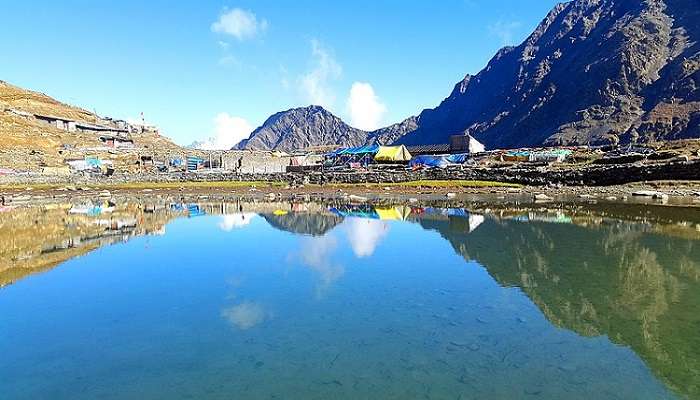
The word Manimahesh can be explained as “Mani” or jewel and “Mahesh” is used as another name for Lord Shive. Therefore, it can be explained as the jewel on the crown of Lord Shiva.
Many people believe and have seemed to witness the shining light of the jewel reflected on Lake Manimahesh on a clear day. It is said that a ling is placed on top of the mountain which is a gem and it shines on rare occasions.
The glaciers on the mountain tops can explain such a phenomenon. The light that reflects from the glaciers looks like a shining jewel.
Manimahesh Lake Trek Routes
The Manimahesh Lake Trek or Yatra is a state-wide affair that attracts pilgrims and adventure seekers annually. The trek lasts 15-20 days and starts on the day of Janmashtami, known as ‘Chota Snan’, and ends on Radha Ashtami, called ‘Bada Snan’. There are three major routes tourists can take to reach the holy lake; they are listed below:
1. Route From Bharmaur
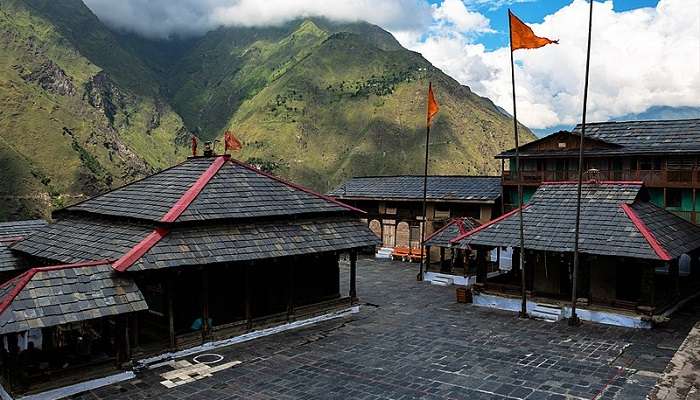
- The first route to reach Manimahesh Lake is Bharmaur village from Chambal which is 60 km away and takes about 2 hours.
- The pilgrimage only starts once you dip in this small cemented pool with icy water called the Bharmani Temple Kund. The Bharmani Devi Temple is located near Bharmaur and takes half an hour to reach via taxi. The fare costs only 100 Rs, and if one wants to walk, the trek is 5 km.
- Once you are back from the Bharmani Devi Temple, Hadsar is the next stop, 12 km away via bus or car. You can take your car as parking spots will be available in Hadsar.
- The trek to Manimahesh Lake starts from Hadsar. Six km away is Dhancho, where most people stop to take a break and spend the night. Some prefer to keep moving forward, which is not a worry as there are many tents and pitstops on the way.
- Dhancho presents three different routes to the lake. The safest and most commonly used route is called ‘Shiv Gharat’, where people can hear the sound of drums from the mountains, another mysterious fact about the Manimahesh Lake Trek.
- The next stop is Gauri Kund, 6 km away from Dhancho. Men are forbidden to go near this lake, but it is extremely auspicious for women to take a dip.
- Finally, only 1 km away is the Manimahesh Lake. One can view the majestic Mt Kailash if the sky is clear. People are known to take a dip in this lake as it is considered to liberate one from all their sins.
Suggested Read: Adventure Sports In Himachal Pradesh
2. The Parikrama Route
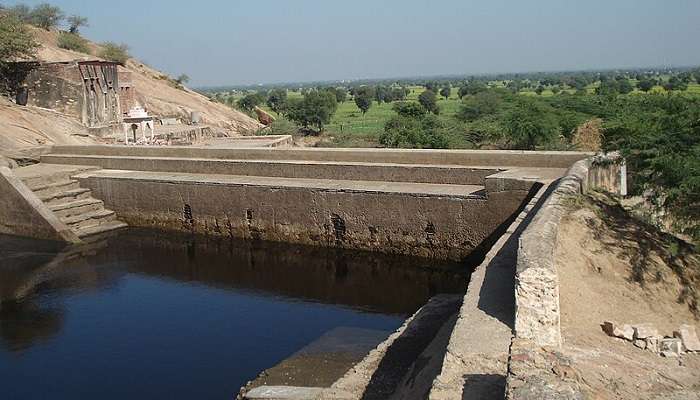
- The Parikrama route is the same one as mentioned above till Hadsar. This is the point from where one takes a different route.
- What sets this route apart is its magnificent views from the trek. This way of travel takes you around the great Mt Kailash. You can enjoy the different terrains, villages, and lush green meadows on your way.
- There are two ways to reach Kugti village from Hadsar – hire a cab or take a hike of 3 to 4 hours. Keep in mind that there are no hostels or lodgings to spend the night in the village. However, if any of the accommodating villagers provide shelter for the night, that is your best bet, or carry your tents to set up camp on the outskirts of the village.
- The next stop is Dhalotu for which hiring a guide is recommended as you might find yourself lost. However, if you do not want a guide then always remember what the locals often mention “stick to the right route”; they mean the right side direction.
- The trail takes you towards a small dense; after crossing, you walk along a small stream for 6 km, which will eventually lead to your next destination, Alyas.
- The locals set up camp in Alyas during the yatra period so travellers could rest for the night.
- It is recommended to leave Alyass by 7 am to reach Jtnu Pass by 10 am as the weather is the most suitable in the morning. After that time frame, the weather makes it tough for me to continue walking.
- The Manimahesh Lake is visible from Jotnu Pass and the descent is easily achieved. On the way down, you pass the sacred Kamal Kund which is half an hour to 45 minutes away from your destination.
- To complete the Parikrama Route, one must leave the Manimahesh Lake, taking the Hadsar via Dhancho downhill route.
3. Route To Manimahesh Lake Via Helicopter

The easiest and quickest way to Maninahesh Lake is via air i.e. a helicopter. The Helicopter takes off from Bharmaur and descends near Gauri Kund. Tourists have to trek from Gauri Kund to the lake 1 km away. The exact route is taken to return to Bharmaur. Although it is the easier route, it is usually opted by travellers who find it difficult to undergo the entire trek to the lake.
Further Read: Karsog Valley
The pilgrimage to the holy and sacred foothills of Lord Shiva’s abode, Manimahesh Lake Trek, will surely be exciting and adventurous. Whether you enjoy experiencing the culture of Kugti Village or trekking through Dhancho to see the breathtaking views of Shiv Gharat, this trip guarantees a one-in-a-lifetime journey. Book a trip to Himachal Pradesh to experience the hidden gems of nature.
For our editorial codes of conduct and copyright disclaimer, please click here.
Cover Image Credit: Ashish3724 for Wikimedia Common
Frequently Asked Questions About Manimahesh Lake Trek
Is the trek to Manimahesh Lake difficult?
No, the trek is not difficult. As long as one is prepared and has the help of a guide and proper equipment, the trek is very enjoyable.
How long does the trek take to complete?
It takes approximately 15 to 20 days to finish the Manimahesh Lake Trek.
Is Mt Manimahesh Kailash visible from the lake?
If the skies are clear, then yes the Mountain is visible.
How to prepare for a trekking trip?
Carry your ID card, power bank, lightweight shoes, backpack, camping necessities, and a change of clothes, etc.
Is it difficult to breathe at such a high altitude?
Naturally, it may take time for our lungs to accumulate to the high altitudes. However, with proper equipment, you can easily trek.
People Also Read:
Trekking Near Manali Trekking Near Rishikesh Trekking Near Panvel

Embrace the essence of surreal places around the world through perfect narratives with a touch of imagination. As a content writer, I weave my ideas and words together to create a vivid picture of alluring destinations. Embark on limitless adventures as you read thrilling travel stories.




